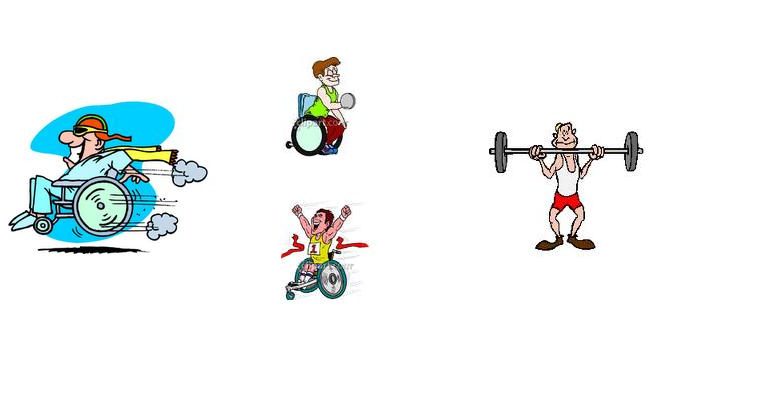
Disability and sport: how a little exercise can have a big impact
If you’re disabled, exercise can make a big difference to your life, and help to minimise some of the physical difficulties you experience. That’s why we’ve spoken to Yvonne Jacobs, a fitness coach that specialises in helping disabled people, for her top tips on how to get involved in fitness and sports if you’re disabled.
Statistics show that people with disabilities are far less likely to take part in regular sport or physical activity than their non-disabled peers. But disabled people have so much to gain from regular physical activity. It can help to minimise issues experienced in day-to-day life, including:
- putting more strain on one side than the other and therefore increasing injury risk;
- muscle wastage due to difficulty with moving certain parts of the body;
- imbalances occurring between overused and underused muscle groups, which can lead to all sorts of issues, including shoulder and back issues, knee problems, inflexibility, balance problems and trouble doing everyday movements.
In addition, by doing regular sport, you will sleep better, have more energy, and feel better about yourself. The benefits of exercise go far beyond physical health and the confidence gained can often spill over into other areas of your life.
Unfortunately, when it comes to sport and fitness, not everywhere caters for disabled people. For many, the word ‘disability’ still conjures up an image of a person in a wheelchair. But physical disabilities can take various forms. They can include Cerebral Palsy, spinal injuries or amputations, to name just a few. In fact, only 8% of disabled people are wheelchair users.
This lack of understanding can lead to coaches, clubs or gyms assuming that catering for so many disabled people would be too difficult. However, in many cases, they could include people with certain disabilities without too much change.
So, whatever your disability, it is important to find a way to overcome these initial obstacles as taking part in regular exercise is vital for everyone. Fortunately, there are more and more facilities that now pride themselves on being disability friendly, especially if you are willing to be flexible and come with an open mind.
Here are a few tips and ideas that may help you get started. Different things work for different people, but hopefully, something here will work for you.
Find the right coach
There are probably more coaches than you think who have some experience of working with people with disabilities. If you can’t find one, there may be someone willing to add it to their coaching experience. For some people, the process of learning together can be the best experience.
If there isn’t a suitable gym or fitness instructor near you, you could consider remote coaching, via Skype, for example. This is something I offer to people who are not geographically near to me, and it can work very well. With so much technology at our fingertips, you can have access to a coach or trainer who may be just right for you, but may be based many miles away.
There is also the option of a combination of remote coaching and face-to-face to get the best of both worlds. This can be particularly suitable for someone who feels self-conscious and lacks the confidence to exercise in front of a large group of people.
Exercise with a friend
If you have a friend who already does an activity that you would like to try, go along with them. If not, do you have a friend who would like to start with you? It can make introduction and integration feel much more comfortable if you are there with someone you know.
Make small changes to your routine
You don’t have to take up a sport or go to the gym if you don’t want to. You can build exercise into your daily life and improve your fitness by making small changes to your routine. For example, you could take 5 minutes a few times a day to do a rapid high-intensity set of exercises. Many exercises, such as lunges, squats, arm presses and seated crunches, can be done in a small space without changing into gym gear. You could also build these into everyday activities, for example, try squats while loading and unloading the washing machine rather the just leaning over.
Also, think of housework as a workout rather than a chore. Try to do cleaning and dusting quickly for a cardio workout and have a clear out to provide a mini weightlifting session. You could also walk or push rather than taking to car or the bus for shorter journeys. The possibilities are endless. But it really depends on each individual’s abilities and lifestyle. I provide a number of people with home-based training plans and have seen some good results.
Try a water sport this summer
Try out swimming, canoeing, rowing or pedal boating. Swimming is great for people with most disabilities and many pools have hoists to assist those who have trouble getting in and out of the pool on their own. The warm weather makes outdoor pools very appealing, too.
Canoeing and rowing can be fun for those who are able to co-ordinate their upper bodies but may have difficulty standing. Pedal boating is a great activity for the legs, so should be good for those who have some ability to utilise leg movement.
Both of these activities can be done with friends so you can share the effort, which means they can also be adapted for many abilities and strengths. These are just a few examples but, getting outside in good weather can increase your mood and help you relax.
Make small changes to your diet
Big changes can be overwhelming and it’s easy to give up. Small changes won’t have the same dramatic effect, but over time can make a real difference. For example, add extra vegetables to your plate rather than change the whole meal or trade in dessert for a piece fruit once or twice a week.
Perform functional movements
Adaptive squats, lunges and arm presses are great exercises! If you have a weakness on one side, try to perform the same movement on both sides, that way it will become stronger.
For someone with one-sided Cerebral Palsy, when doing an arm press, think about the movement from the shoulder and allow the weak side to follow the strong side. It’s not about the movement looking symmetrical; it’s about using the muscles in the same way.
Don’t judge yourself by what others do
Your disability may mean you have you do things a little differently. Things can take more time, even getting ready for the activity or going from one movement to another can take longer. That’s OK. Just do what’s right for you.
Be patient while you try to find the right fit
If you use a coach or gym, remember you are trying them out as much as they are trying you out. Not every coach or environment will be right for everyone, disabled or not. If it doesn’t feel right, just accept that it’s not a good fit and try somewhere or someone else.
Whatever activity or approach you choose, be active and you will find that your strength, movements and posture will improve.
Contact Yvonne at disabilityfitness@consultant.com for more information on exercising with a disability or for coaching advice.
By Yvonne Jacobs
Get in touch by messaging us on Facebook, tweeting us @DHorizons, emailing us at editor@disabilityhorizons.com or leaving your comments below.
https://disabilityhorizonscom.onyx-sites.io/2017/04/superhero-series-disability-sporting-event-everyone/
https://disabilityhorizonscom.onyx-sites.io/2017/02/overcoming-fears-disabled-daredevils-story/

2 Comments